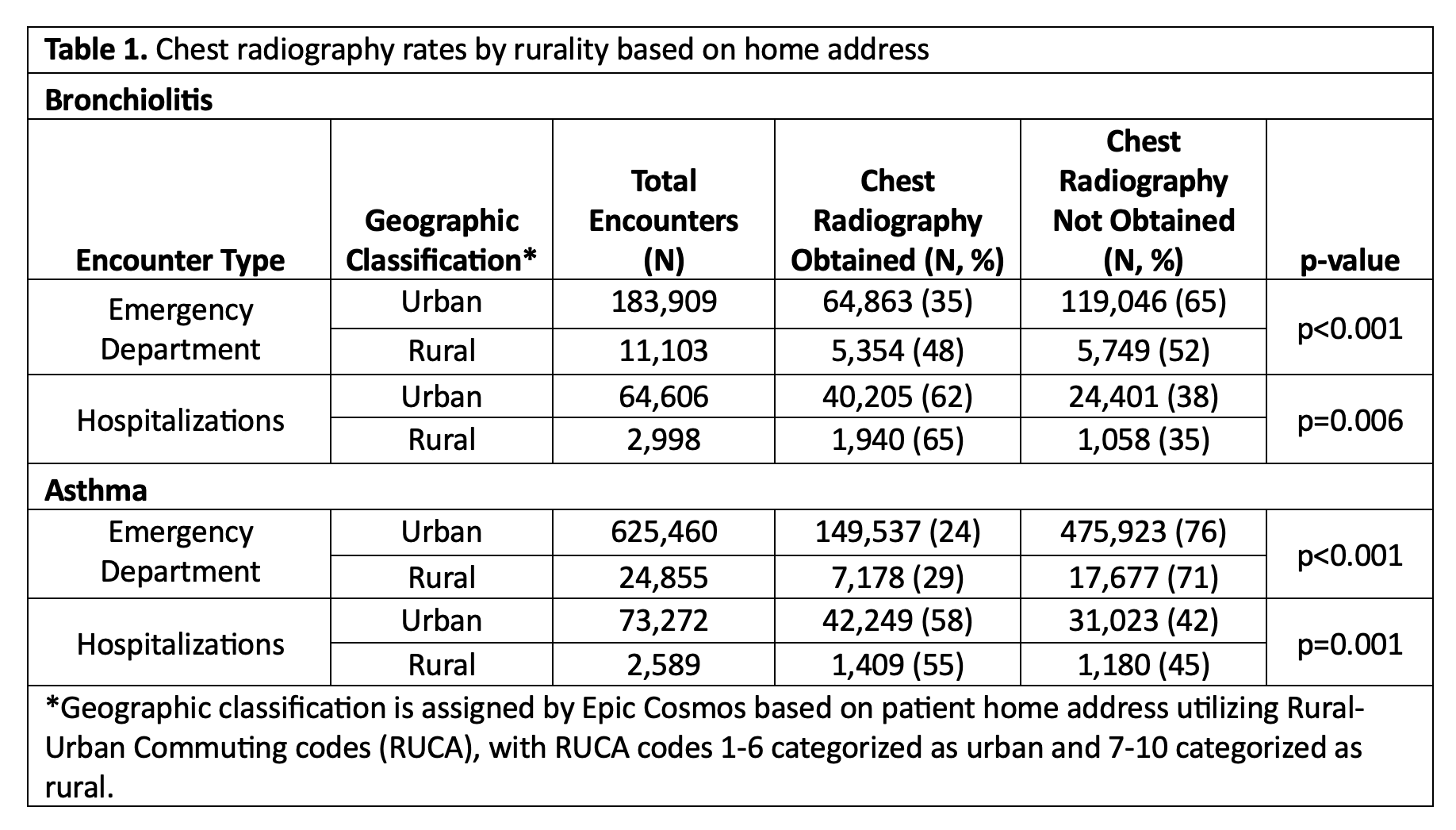Health Services Research
Session: Health Services Research 2: Novel Methods and Disparities
303 - Urban-rural disparities in low-value chest radiography
Saturday, May 4, 2024
3:30 PM - 6:00 PM ET
Poster Number: 303
Publication Number: 303.1340
Publication Number: 303.1340
- SH
Samantha A. House, DO, MPH (she/her/hers)
Associate Professor
Dartmouth Health Children's
Lebanon, New Hampshire, United States
Presenting Author(s)
Background: Literature exploring pediatric low-value care suggests that rural-residing children may be at higher risk of receiving some low-value services than urban-residing peers. Chest radiography for asthma and bronchiolitis are among the most common and costly low-value services delivered to children in acute care settings, but urban-rural disparities for these services have not been explored.
Objective: We aimed to measure urban-rural disparities in chest radiography among children with asthma and bronchiolitis cared for in diverse emergency department (ED) and inpatient settings.
Design/Methods: We conducted a retrospective cohort study of encounters from 7/1/2021 to 6/30/2023 using Epic Cosmos. Cosmos aggregates voluntarily submitted electronic health record data and represents >9 billion encounters. We identified ED visits and hospitalizations for children ages 2-24 months with a diagnostic code for bronchiolitis and ages 3-17 years with a diagnostic code for asthma; outside transfers were excluded. Rurality was determined by Rural-Urban Commuting Area Codes associated with patient home address. Chi-squared tests were used to compare chest radiography rates between urban- and rural-residing children.
Results: There were 195,012 eligible ED encounters and 67,604 hospitalizations for bronchiolitis. Urban-rural distribution of the encounters and chest radiography rates are shown in Table 1. In the ED, 35% of children residing in urban regions received chest radiography compared to 48% of rural-residing children (p < 0.001). In the hospital setting, 62% of urban-residing children received chest radiography compared to 65% of rural-residing children (p=0.006). For asthma, there were 650,315 eligible ED encounters and 75,861 hospitalizations. In the ED, 24% of urban-residing children received chest radiography compared to 29% of rural-residing children (p < 0.001). A reverse trend was noted among asthma hospitalizations, with a greater proportion of urban-residing children (58%) receiving chest radiography than rural-residing children (55%).
Conclusion(s): In the ED, chest radiography for asthma and bronchiolitis was more common among rural-residing children than those residing in urban regions. This difference persisted, albeit to a lesser extent, for children hospitalized with bronchiolitis, while urban-residing children hospitalized for asthma received more chest radiography than rural peers. Further study is needed to understand drivers of these trends, including the influence of hospital-type and other social determinants of health on these outcomes.

